| Skyfall Week: BlogalongaBond: Quantum of Solace (2008) |
 |
 |
| Written by Ivan Radford |
| Thursday, 25 October 2012 20:20 |
|
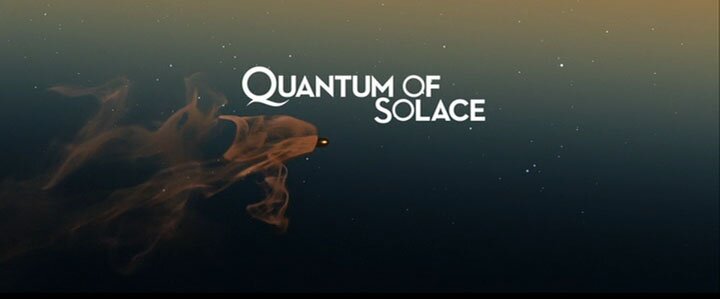
BlogalongaBond. One Bond film a month until Skyfall comes out tomorrow. (OH MY GOD SKYFALL IS OUT TOMORROW! AT LONG LAST. ALL THAT ROGER MOORE WAS WORTH IT.)
It wasn't without excitement that I went into Quantum of Solace. After Martin Campbell's brilliant Casino Royale, Bond's return was a cinematic event worth salivating over. Even the choice of Marc Forster seemed promising - an arthouse director helming a blockbuster? What a grand idea!
But while Daniel Craig's craggy, emotional 007 remained a captivating hero - more a landmine than a lead actor - everything else was kind of, well, dull. There are good bits, let's be clear on that. The environmentally-aware Bond villain (an amusingly whiney Mathieu Amalric) and double-crossing CIA plans are proper shades of grey stuff, but while the set-up is promising, Quantum forgets to add a plot. Was it the writers' strike that left them without the time to finish writing the film? Whatever the reason, the end result was a Bond movie with 25% of a script and 75% white noise. So they did what any blockbuster would and filled it with action.
That wouldn't be a problem if it was good action. But it isn't. Like Yakult, there are good types of action and bad types of action - and this is the bad type. The kind you wouldn't want anywhere near your body, just in case it blew up sideways and chopped your face off.
And that really is how you feel for most of the runtime. The opening begins with a glorious tracking shot over an Italian lake, carefully intercut with shots of Bond’s Aston Martin. But once that shot is finished, the footage is over-edited to shreds. With the exception of one crosscutting night at the opera, the set pieces are so kinetic that you can't tell what's happening; a tin of tuna could direct a better action sequence. At least it would be stationary. At one point during that opening car chase, it looks like Bond drives off a cliff and explodes to death. When Bond finally stops and says it’s time to get out to his shaken and stirred passenger, he’s not the only one ready to leave.
It wasn't without excitement that I went into Quantum of Solace. It was with confusion that I left.
So what went wrong? Two things: Matt Chesse and Richard Pearson. How did the editors screw up so badly? They probably read this informative pamphlet I found in my DVD box...
|
| Read more... |
| BlogalongaBond: Casino Royale (2006) |
 |
 |
| Written by Ivan Radford |
| Sunday, 30 September 2012 21:06 |
|
 BlogalongaBond. One Bond film each month until Skyfall in October. BlogalongaBond. One Bond film each month until Skyfall in October.
Finally. Casino Royale. Following the mountain of butt-nubbins that was Die Another Day, Daniel Craig’s arrival was a shot of pure 007 joy – like getting a blowjob from Sophie Marceau after a one-night stand with Jaws.
Martin Campbell returned to the helm to do what he did best: reboot the franchise to fit its era. Brosnan’s 90s baptism by Russians smartly played up the irony while allowing for some revenge. Craig’s noughties cocktail kept the cold-blooded part – a cornerstone of Ian Fleming’s character – and added in a dash of On Her Majesty’s Secret Service’s sorrow.
But it was more than that: as well as nailing Bond’s character, Casino Royale knew when to blow things up and when to sit things out. Gone are the CGI surfboards and ice palaces; in their place, clever exchanges of dialogue and games of cards. After an explosive first half (and some bold opening credits), it really does feel like we’re back in Dr. No territory. Casino Royale didn’t out-Bourne Jason Bourne by punching people in the face. It did it by staying quiet for the middle act and letting Craig’s dormant landmine take centre stage.
And then there’s Eva Green - EVA GREEN – whose independent streak and sexy smarts made her the first, and arguably best, Bond girl of the series. She’s the perfect companion for Mads Mikkelsen’s quiet, calculating Bond villain, both of them adding realism rather than camp humour to proceedings.
Held together by David Arnold’s absolutely stonking score, Casino Royale doesn’t so much slap Die Another Day around the face as strap Pierce Brosnan to a chair and whip his cheesy balls with a rope while yelling: “Will you yield?” It’s a cathartic release for everybody.
Still, Casino Royale’s not the first time United Artists/MGM have tried to reboot Bond. OHMSS removed the polish of Diamonds Are Forever. For Your Eyes Only scaled back Moonraker. GoldenEye resurrected 007’s misogynistic dinosaur. The boldest restart, though, occurred in 1992, way before Martin Campbell entered the frame. And its legacy – nay, its example – lives on to this day.
I am talking, of course, about James Bond Jr.
|
| Read more... |
| BlogalongaBond: Die Another Day (2002) |
 |
 |
| Written by Ivan Radford |
| Friday, 31 August 2012 07:37 |
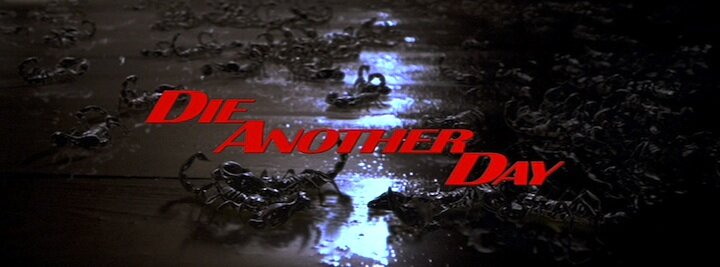
BlogalongaBond. One Bond film a month until Skyfall turns up.
If The World Is Not Enough saw Pierce Brosnan lose control of his cheese-nibbling habit, Die Another Day saw The Bronhomme dive face-first into a giant vat of brie. Terrible dialogue, ludicrous science, a dumb plot. All of it stinks of mouldy lactose. It’s a proper, not-safe-for-humans, toxic Dairylea dunker of a film.
So concerned with 007’s 20th anniversary were Eon, they gave writers Neal Purvis and Robert Wade free reign to do whatever the hell they wanted. Despite turning out a solid TWINE script, the result here was a string of nonsensical set pieces and stupid villains all conceived with the sole purpose of constantly referring to Bond’s birthday – like a drunk uncle who forgets what day it is and tries to fob you off with a tenner the morning afterwards.
Old props appeared, parachutes popped out and Bond continued into space with technology that Roger Moore could only dream of. Make no mistake: this was the Moonraker of the 21st Century. But featuring some extra bullshit about DNA.
Even the henchmen were rubbish, half of them only invented just as an excuse for a pun. “My name is Mr. Kil,” says one after opening a car door. “That’s a name to die for,” retorts Bond. This has absolutely nothing to do with the rest of the film.
And we still haven’t got to that flipping invisible car. As if ruining John Cleese wasn’t bad enough, Die Another Day then had to go and tarnish the reputation of the Aston Martin as well, drowning everyone and everything in a river of melted brie.
And THEN, after paddling up and down in Aston Martin’s cheddary fondue grave, it had the gall to take Ian Fleming’s gritty, manly secret agent and dump him in the middle of a CGI surfing set piece that’s closer to a SNES game than a Hollywood blockbuster. You couldn’t be cheesier if you were listening to Come On Eileen on a New Zealand LPFM radio station (called Cheese) while wolfing down Wensleydale and reading Cheese!, the monthly Japanese manga magazine. You might as well replace Pierce Brosnan with a CGI Cheese String for all the difference it makes.
It’s a wonder, then, that Die Another Day starts off so phenomenally well. The Bronhomme grows a proper beard, is banished by M and winds up out of date in the changed, modern world of espionage. Why? Because director Lee Tamahori had one good idea: trying to kill Bond. He spends the whole of the opening credit beating the heck out of 007 in a North Korean jail cell. Oh yes, that Tamahori was a sadistic git, all right.
But even before the near-death of 007, Die Another Day’s introductory sequence is top-notch. How can you rival such a thrilling, surprising slice of entertainment?
The first step is to read this informative pamphlet I found in my Die Another DVD case…
|
| Read more... |
| BlogalongaBond: The World Is Not Enough (1999) |
 |
 |
| Written by Ivan Radford |
| Monday, 30 July 2012 14:17 |
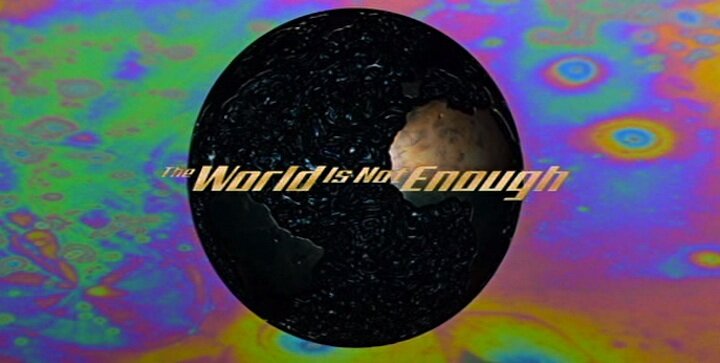
BlogalongaBond. One Bond film each month until Skyfall turns up.
If Tomorrow Never Dies saw modern 007 occasionally dip into the Roger Moore hamper of vintage cheese, The World Is Not Enough saw Pierce Brosnan nibbling on stilton every few minutes - in between shooting people in cold blood.
From its very first conversation, mostly designed for Bond to whip out his banking puns, to the underwater finale (any Bond movie that ends with a submarine should be treated with caution), Michael Apted’s actioner appears all too happy to hark back to the camp days of the 1970s.
But despite the blossoming of mould on the film's yellowy surface, The World Is Not Enough is a stonkingly good ride. Why? Robert Carlyle is low-key enough to stop his I-feel-no-pain-until-I-die science bollocks from feeling too ridiculous; Judi Dench milks the chance to give M some backstory (a Spooks-style tactic about to be used again by Skyfall); the plot follows in TND's footsteps to stay topical and witty; and Denise Richards almost - almost - subverts the franchise’s T&A stereotype, presuming you can ignore the fact that she only exists to allow for one massive Christmas-themed innuendo at the end.
Which leads us back to cheddar-nibbling Brosnan. Three films into his stride, Pierce has nailed his cocktail of Moore and Connery. He knows how to be camp and cool, humorous and homicidal. Every time TWINE starts to smell a bit cheesy (hello to John Cleese), up pops Brosnan to devour the excess dairy. And let's be clear on this: The Bronhomme swallows Stilton like no other Bond. He’s damn good at it.
Even then, though, he’s not Apted’s secret weapon. Oh no. That, dear reader, is Elektra King. Slinking between femme fatale and tormented victim, Sophie Marceau’s Bond girl is impossibly sexy – and arguably the most complex female character in the franchise’s history. She sells her romance with Bond, but more importantly the passion of her own conviction. (Unlike a certain recent superhero movie, Marceau’s drive to continue her father’s legacy is developed into a full-on character motivation rather than treated as a token plot twist.)
It’s Marceau’s unforgettable performance, together with a confident Bronhomme, that makes TWINE such a good watch. Sophie's presence even distracts from some of the clunkier plot points, allowing Apted to blow up cars, snowmobiles, helicopters and – yes – submarines with enjoyable abandon.
And yet, for all the quality set pieces, steamy romance and daft underwater hijinks, the one thing everyone remembers from The World Is Not Enough is the opening. The movie’s signature set piece, an explosive boat ride down the Thames right up to the Millennium Dome, lets Vic Armstrong's stellar second unit get the story rolling – all ready for Elektra King to carry it to the end.
An inspired piece of location scouting, the ambitious wet pursuit (the longest intro to any 007 film) generates its buzz from both the characters and their surroundings to create one of the series' landmark chase sequences. It's witty, spectacular and feels like classic Bond.
Why? Because 007 loves boats. Just look at Roger Moore’s outings, half of which involved some form of farcical aquatic ceremony. Right after women, booze and killing people, boats are Bond’s fourth favourite thing. (Fifth, if you include the stilton.)
Which leaves one question: how do you drive a boat like Bond?
Fortunately, this instructional pamphlet was in my special edition TWINE DVD box...
|
| Read more... |
| BlogalongaBond: Tomorrow Never Dies (1997) |
 |
 |
| Written by Ivan Radford |
| Saturday, 30 June 2012 10:32 |
|
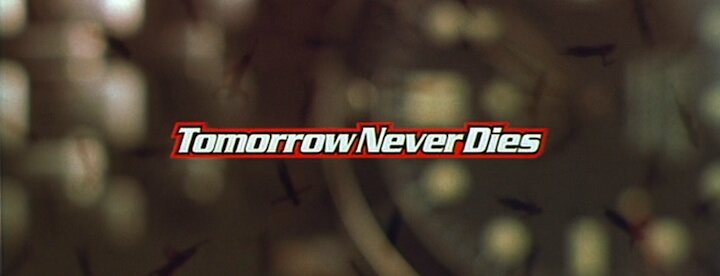 BlogalongaBond. One Bond film each month until Skyfall turns up. BlogalongaBond. One Bond film each month until Skyfall turns up.
I can never work out where I stand on Tomorrow Never Dies. On the one hand, it’s a laughably ridiculous romp featuring some of the dumbest dialogue since Diamonds Are Forever. On the other hand, it’s a laughably ridiculous romp featuring some of the dumbest dialogue since Diamonds Are Forever.
Stealth boats? Titles that make no sense? German torture specialists? It may star Pierce Brosnan, but this is textbook Roger Moore bunkum. And yet it’s a LOT of fun. Partly because it features two of the franchise’s very best vehicle set pieces – Vic Armstrong, jumping from stuntman to second unit director, obviously took our James Bond driving lesson – alongside a genuinely independent Bond girl (a butt-kicking Michelle Yeoh). Partly because David Arnold's score does what Eric Serra failed to do and finish John Barry's journey into electro-tinged modernity. And partly because it has something Roger Moore’s era was missing: Jonathan Pryce.
Hammier than Jon Hamm eating a ham sandwich while playing with his Toy Story pig action figure, Pryce’s Elliot Carver chomps his way through the scenery like Christopher Lee’s bastard porky offspring. Some argue that Bond shouldn’t be wasting time on unthreatening, idiotic villains. I say bravo to Bruce Feirstein for turning Cold War 007 into 20th Century satire. After all, there are almost as many laughs here as In the Loop – albeit for some of the wrong reasons.
Does Tomorrow Never Dies’ Elliot Carver represent Rupert Murdoch, whose flagship tabloid publication The Sun was on 10 million readers a day in the year of the film’s release? That’s what most people think and it diminishes the film to a footnote in the post-News of the World scandal, a sort of Michael Bay’s Leveson: The Movie (thanks to @followthelemur for coining that one).
But it’s more than that. Indeed, it came before any of it happened. Based on Robert Maxwell, the media's other R.M., Tomorrow Never Dies is a blueprint for rival tycoons and wannabe successors - an overblown take on one man's legacy that only looks silly now because of the absurd events that have happened in real life. (That and the fact that he looks and sounds like Michael Howard.)
To wit, let’s take a look at this educational pamphlet I found in my DVD case...
|
| Read more... |
| BlogalongaBond: GoldenEye (1995) |
 |
 |
| Written by Ivan Radford |
| Saturday, 26 May 2012 12:53 |
|
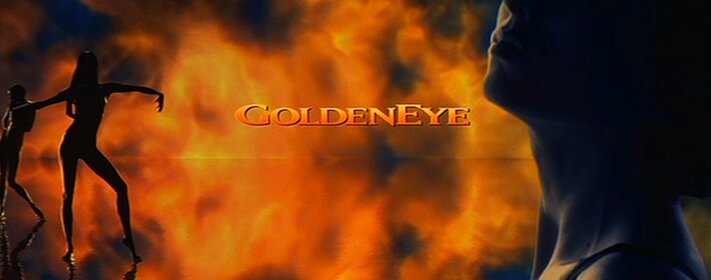 BlogalongaBond. One Bond film a month until Skyfall arrives in November. BlogalongaBond. One Bond film a month until Skyfall arrives in November.
Pierrrrrce BROSnan! That was how they introduced 007 on the highly underrated Muppets Tonight (see here for a wonderful Brosnan-fire-eating anecdote). But before that he had an even better introduction. No, not that 1987 Diet Coke ad: GoldenEye, one of my favourite Bond films.
Taking its cue from Dalton’s James Bond-goes-rogue tradition, GoldenEye was a gritty outing for 007 with a liberal sprinkling of Roger Moore, an update smartly centered on the Anglo-Soviet aftermath of the Cold War. The result stayed true to Fleming's character (and the series' ludicrous 1970s-esque stuntwork) but positioned him firmly in the 1990s.
At least 90% of that was down to casting Sean Bean as the bad guy. One of the few other 00 agents we actually get to know, Alec Trevelyan is one of the best Bond villains in the whole canon. He’s menacing, he has a good line in pop psychology and he gives Brosnan a chance to define his twinkly-eyed 007 by wreaking some personal revenge.
Where GoldenEye succeeds is keeping the balance between serious and silly. Giant EMP-firing satellite in the sky? Silly. Russian dominatrix who squeezes men to death with her thighs? Sexy, but ridiculous. Unlike Moore or Die Another Day, though, the silly is never out of control – even Q’s scene, which sees Desmond Llewelyn snort with laughter, is balanced out by Judi Dench's steely turn as M (even if she does recycle the same old "personal vendetta" dialogue).
A three-dimensional bad guy, a rounded 007, a spot-on storyline, a cracking Bond theme song by Tina Turner/U2 and some superb action? Director Martin Campbell deserves a lot of credit: GoldenEye is just the entry the franchise needed after six years of confused waiting. Especially when we came so close to Kevin I-own-the-rights-to-Thunderball McClory doing yet another Never Say Never Again-style remake in 1990, starring Brosnan (called Atomic Warhead).
But GoldenEye is arguably most famous for giving the series something it never had before: the chance for the audience to pick up a gun and join in. Yes, GoldenEye 007 on the N64, which set the standard for film-based video games by joining the two rival mediums together with flawless precision. In fact, Rare's radical creation has never been bettered by a film game tie-in, let alone a general FPS - certainly not a Bond one, at least.
Yet 007 games have become as much a staple as the already-extensive list of brand names and merchandise associated with the franchise. So what made GoldenEye 007 so special? This informative pamphlet which I found in my DVD case explains it all…
|
| Read more... |
| BlogalongaBond: Licence to Kill (1989) |
 |
 |
| Written by Ivan Radford |
| Monday, 30 April 2012 16:02 |
|
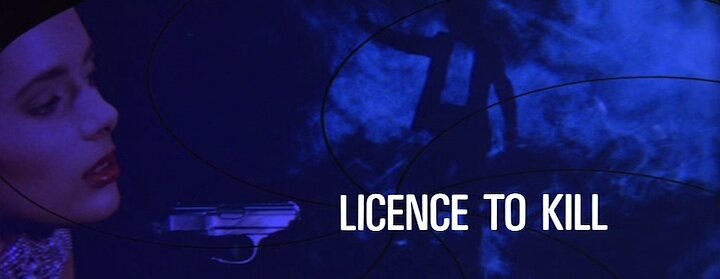 BlogalongaBond. One Bond film a month until Bond 23 turns up. BlogalongaBond. One Bond film a month until Bond 23 turns up.
There's nothing like a secret agent going rogue. Actually, there's nothing like a secret who doesn't: they literally don't exist.
Moles, insiders, traitors, saboteurs, mavericks, heroes, wrongly-accused people - from Harry Palmer and Jason Bourne to Veronica Salt and Ethan Hunt, going rogue is in every secret agent's job description. It's actually expected by your employers. If you don't go rogue at least once in your career, you get bumped off. Probably by another rogue agent.
And that's why I, like many others, love Licence to Kill. It's the nasty Bond film. The one where 007 shows just how much of a bastard he really is (well, that and Benicio Del Toro saying the word "honeymoon").
Dalton, already the steely-eyed murderer of Fleming's novels, is even more cold and ruthless than normal. Going on the rampage to avenge Felix Leiter (brother from Langley)'s death, he practically puts up a sign saying "Roger Moore's eyebrows are not welcome here". Then kills anyone who doesn't bother to read it.
But while John Glen delights in the everyday ambitions of Robert Davi's drug dealing villain Sanchez, and we enjoy the 15-rated blood splattering of THAT pressure chamber death scene (cf. the industrial microwave in Kick-Ass), this is hardly the first time 007 has gone rogue. Pursuing Blofeld, getting Goldfinger, he spends a lot of time disobeying M and chasing his own agenda - he's MI6's Quincy, the government's McNulty, Her Majesty's House. The Columbo of the secret service.
By the time the 1989 outing comes along, he's already a bit of an expert.
So, if you're a patriotic spy and you're concerned about your career progression, take a few tips from the best with this informative pamphlet that came free with my DVD...
|
| Read more... |
| BlogalongaBond: The Living Daylights (1987) |
 |
 |
| Written by Ivan Radford |
| Friday, 16 March 2012 07:15 |
|
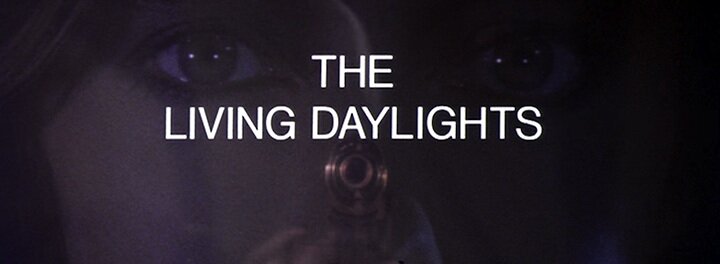 BlogalongaBond. One Bond film a month until Skyfall arrives in November. BlogalongaBond. One Bond film a month until Skyfall arrives in November.
Roger Moore is gone. Long live James Bond. That's the response of any sane 007 fan now that Old Eyebrows out of the frame. In his place, someone new. Someone young. Someone with hair. Someone with manly sideburns. Someone... Welsh. Someone called Timothy Dalton.
It's surprising just how much of a difference one actor can make. You see, no matter who's wearing the Bond shoes, this is still a John Glen film - and the A View to a Kill, Octopussy and For Your Eyes Only helmer is still churning out the same old thing. So too are stalwart Moore-era screenwriters Michael G. Wilson and Richard Maibaum. It's no shock, then, that within a few minutes of the opening credits (featuring a title song that rivals Duran Duran's previous effort), James Bond has already scaled a cliff, driven a jeep off the top of it, wrestled a man for a parachute mid-air, landed on a speedboat somewhere in the ocean and picked up a hot girl. He even says a joke at the end.
But you know what? At no point does any of this stupid nonsense feel camp, cheesy or silly because unlike Moore's affable granddad figure, Dalton's secret agent has a sense of a danger - a cold edge that he balances perfectly with a twinkling smile. Not since Connery has there been such a finely-tuned mix of debonair and ready-to-detonate. Timmy gives the whole spy thing a gravitas sorely missing from the last seven movies.
And thank goodness for that. Because his stunts are as ridiculous as ever, from diving out of the back-end of a plane to ice-skating in an Aston Martin V8 Vantage round a frozen lake - blowing up lots of things in the process.
How does Bond keep control of the vehicle through all of this? Well, he obviously had this educational pamphlet with him:
|
| Read more... |
| BlogalongaBond: A View to a Kill (1979) |
 |
 |
| Written by Ivan Radford |
| Saturday, 25 February 2012 06:36 |
|
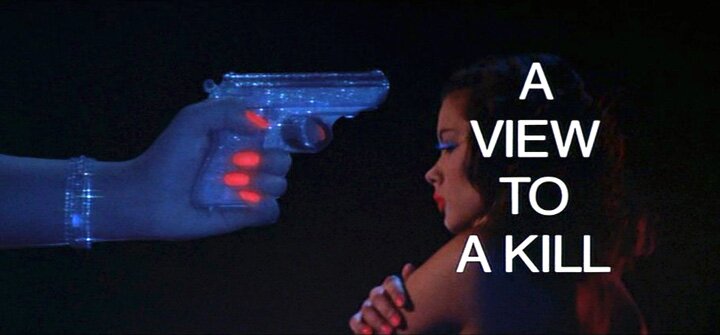 BlogalongaBond. One Bond film a month until Skyfall arrives in November. BlogalongaBond. One Bond film a month until Skyfall arrives in November.
WHY WON’T ROGER MOORE DIE? That was the question that haunted me throughout the last six Bond films. No matter what people threw at him - coffins, snakes, octopodes – he just refused to go away.
In A View to a Kill, a Bond film so bad that even Roger himself didn’t like it, the wrinkled old codge somehow survived the onslaught of horses, a machine gun AND a 5'10" black woman.
That’s when the answer hits you: it's not because he’s invincible or amazing (or because his stuntman does all the work); he won't die because he’s already dead. Underneath that wig, he probably has less hair than Bruce Willis.
He looks more like a shrivelled onion now than a secret agent. When he sleeps with a girl at the end of the opening sequence, it’s not just awkward, it’s psychologically traumatic. (Either that girl has one hell of an Elektra complex, or she’s being paid a LOT of money.)
So why bother with A View to a Kill at all? Certainly not for Christopher Walken’s dreadful villain, who spends his time shooting people and wearing sunglasses (he’s German AND French, the script explains). Not the clunky Silicon Valley storyline, desperate to appear up to date with the cool kids. Not even John Steed’s appearance as a jovial sidekick, which begs for a spin-off series, or Grace Jones’ intimidating May Day can make things fun.
The answer is, of course, the inimitable John Barry.
The film may be a pile of gubbins, but with his tenth soundtrack, Barry’s rarely been better. How did the musical maestro do it? Well, this pamphlet stuck inside my copy of the A View to Kill soundtrack has a few answers…
|
| Read more... |
| BlogalongaBond: Octopussy (1983) |
 |
 |
| Written by Ivan Radford |
| Sunday, 29 January 2012 20:26 |
|
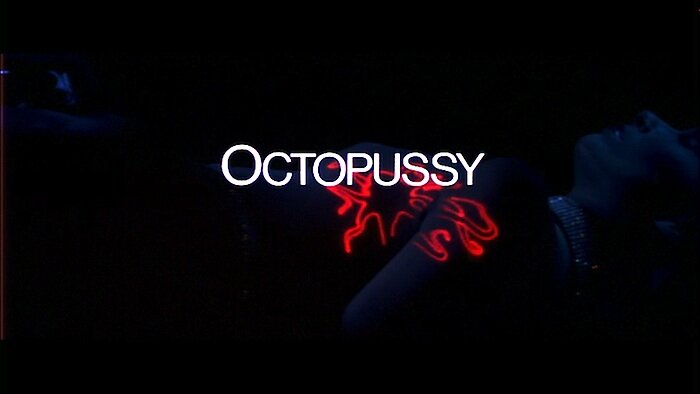 BlogalongaBond. One Bond film a month until Bond 23 turns up. BlogalongaBond. One Bond film a month until Bond 23 turns up.
Bond walks out of an Indian casino. He tips one of the waiters. "That will keep you in curry for a few weeks," he says.
Octopussy is a weird Bond film. In between its casual racism, hollowed-out crocodile boats and islands full of scantily-clad women, there’s an almost-discernible plot. It moves from a fake Faberge egg in a rather neat auction scene (taken from Fleming’s short story) to nuclear warheads at enough speed to trick you into thinking it’s an intelligent story. The problem is that it does this via casual racism, hollowed-out crocodile boats and an island full of scantily-clad women. And, at one point, Roger Moore dressed up as a clown.
As always, the stunts are impressive, but when an ancient Roger Moore constantly sends himself up because even he realises it’s impossible to take him seriously, you’ve pretty much hit the bottom of the franchise. He used to look like a vampire feasting on young, unaware virgins. Now, Moore's Bond looks like a corpse, animated by Cubby Broccoli for his own sick amusement. In one scene, Bond is chased by an elephant. It's hard to tell them apart. Yes, Steven Berkoff’s psychotic General is wonderful and the return of Maud Adams is a welcome sight, but neither are enough to wipe out the memory of Roger Moore swinging through the trees and emitting a loud Tarzan yell.
Octopussy is big. But it’s certainly not clever.
Fortunately, just as Moonraker was rescued by the fact that it actually ends, Octopussy benefits from a typically impressive title sequence. Why single these credits out from the franchise? There are better openings to analyse (an honourable mention here to Daniel Kleinman’s recent work from Goldeneye to Casino Royale) but it’s either a Maurice Bender tribute now or a look at John Barry’s excellent score – and the music is one of the few good things I can talk about next month in A View to a Kill.
So, how can you follow Octopussy’s example and make your own iconic 007 introduction? Here’s a handy guide to designing your own Bond title sequence, written by the expert...
|
| Read more... |
|
|